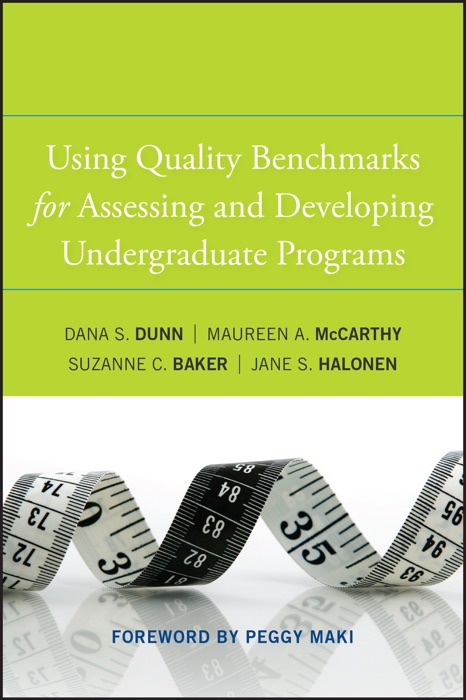(DOWNLOAD) "Using Quality Benchmarks for Assessing and Developing Undergraduate Programs" by Dana S. Dunn, Maureen A. McCarthy, Suzanne C. Baker, Jane S. Halonen & Peggy Maki * Book PDF Kindle ePub Free

eBook details
- Title: Using Quality Benchmarks for Assessing and Developing Undergraduate Programs
- Author : Dana S. Dunn, Maureen A. McCarthy, Suzanne C. Baker, Jane S. Halonen & Peggy Maki
- Release Date : January 21, 2010
- Genre: Education,Books,Professional & Technical,
- Pages : * pages
- Size : 2235 KB
Description
Using Quality Benchmarks for Assessing and Developing Undergraduate Programs
Using Quality Benchmarks for Assessing and Developing Undergraduate Programs introduces selected performance criteria—benchmarks—to assist undergraduate programs in defining their educational goals and documenting their effectiveness.
The book explores the attributes of undergraduate programs by focusing on educationally related activities in eight domains: program climate; assessment, accountability, and accreditation issues; student learning outcomes; student development; curriculum; faculty characteristics; program resources; and administrative support. Further, it conceptualizes a continuum of performance for each attribute in each of the domains to characterize underdeveloped, developing, effective, and distinguished achievement for undergraduate programs.
The goal of the book is to encourage individual departments at various types of institutions to evaluate what they currently do well while identifying areas for refinement or future growth. When benchmarks reveal that a program is underdeveloped, faculty and administrators can plan for how they can best direct subsequent efforts and resources to improve a program's performance and ability to serve students.
Emphasizing formative assessment over summative or punitive evaluation, the benchmarks in this book are designed to improve program quality, encourage more effective program reviews, and help optimally functioning programs compete more successfully for resources. Using performance benchmarks to identify areas of program strength can, in turn, be used to recruit and retain students, seek funding via grants or alumni support, and enhance the perceived rating of an institution.